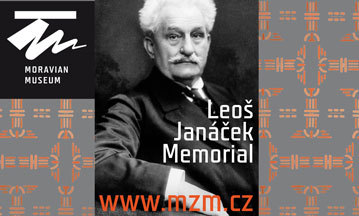Programme
Zoltán Kodály Marosszéki táncok
Erich W. Korngold Piano Sonata No. 3
Slavko Osterc Six petits morceaux
Leoš Janáček In the Mists
Martin Kasík piano
This afternoon concert in the unique environment of the Villa Tugendhat will present piano works by authors whose nations made up the Austro-Hungarian Monarchy before becoming independent successor countries after World War I. Not only did their cultures often intermingle, but the life stories of the individual artistic personalities themselves were also intertwined.
Zoltán Kodály (1982–1967) is a distinct figure in Hungarian music even though he is somewhat overshadowed by his more famous colleague, Béla Bartók. Kodály, like Bartók, was intensively involved in the collection of folk songs, and these had a similarly significant influence upon his musical language. His famous works include the cantata Psalmus Hungaricus, the opera Hary János and the excellent Dances from Galanta. His piano works are also remarkable, for example 1927’s Marosszéki táncok. It is a very impressive composition, and highly demanding as far as interpretation is concerned. It presents a Hungarian folk theme on one hand, yet on the other reflects the musical trends of that time.
Erich Wolfgang Korngold (1897–1957) was born in Brno, in what was then the Austro-Hungarian Monarchy, to the Jewish family of lawyer and influential critic Julius Korngold. Soon afterwards, he left with his family for Vienna where he was seen as a musically gifted child from the very beginning. The work of the son of a powerful critic was thus admired by members of the Viennese musical elite such as Gustav Mahler, Alexander Zemlinsky and Richard Strauss. The small genius grew up to be an important composer who was successful mainly in the field of opera. In 1934 he left for Hollywood, where he wrote mainly film music. After a brief return to Austria, he settled down permanently in America in 1937 and became one of the most famous composers of Hollywood film music. Even though his comprehensible musical language reflected certain contemporary trends in mainly German music (Richard Strauss), it remained close to late Romanticism in its essence. This is also true of Piano Sonata No. 3 from 1931.
Slavko Osterc (1895–1941) was a Slovenian composer, and a student of Janáček´s friend and pupil Emerich Beran. In 1925 he arrived in Prague to study with Vítězslav Novák, Karel Boleslav Jirák and Jaroslav Křička. He also ended up studying quarter tone composition with Alois Hába. After returning to Slovenia, he taught at a local academy, where he educated many important Slovenian composers. Being a remarkable innovator, he was invited on several occasions to the International Festival of Contemporary Music (ISCM), where his work was accepted positively. His Six petits morceaux for the piano comes from the very end of his fairly short life.
Janáček completed his piano cycle In the Mists in April 1912. Not long before that, in 1910, he had moved to a new house in the garden of the Organ School with his wife and housekeeper and there composed his last extensive work for solo piano, with broken self-confidence and in a dejected state. He began work on it shortly after hearing piano compositions by the French composer Claude Debussy and it’s no coincidence that his dreamy, melancholic work includes elements of musical impressionism. The cycle In the Mists won first prize in a contest for composers organised by the Club of Friends of Art, which was supposed to publish the winning work. However, Janáček gave the opportunity to publish the composition to his pupil Jaroslav Kvapil, the second prizewinner of the competition. The cycle In the Mists was performed for the first time by Marie Dvořáková in Kroměříž on 7th December 1913.
Jiří Zahrádka





